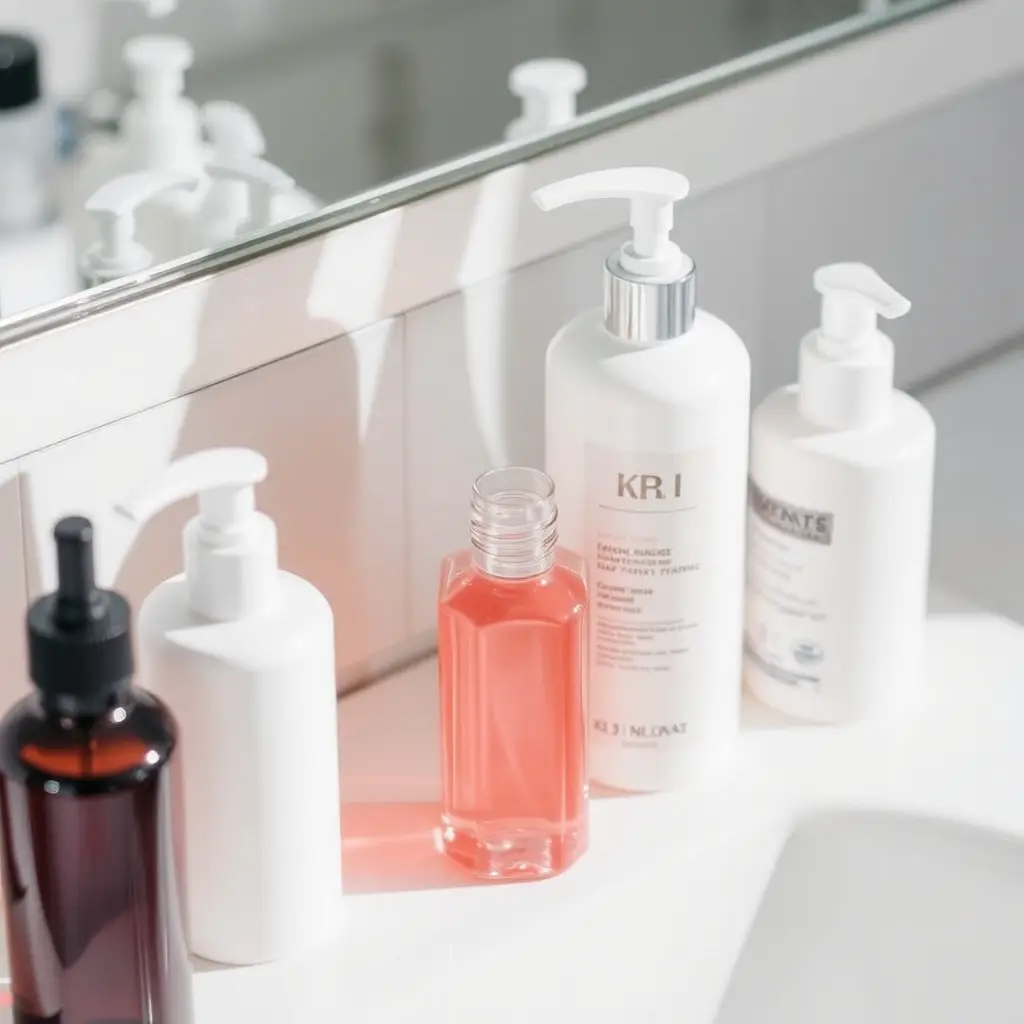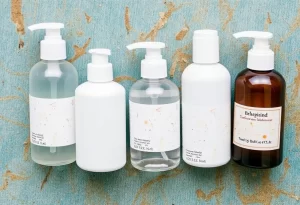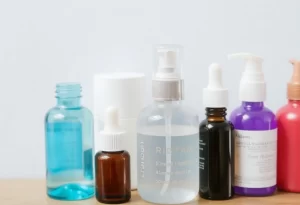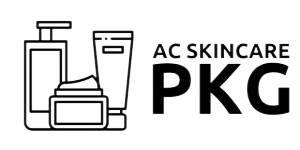
化粧品ボトルの消毒方法
Content Menu
● The Importance of Clean Beauty: A Guide to Sanitizing Cosmetic Bottles and Maintaining Hygiene
>> The Dangers of Dirty Cosmetic Bottles
>> The Consequences of Neglecting Hygiene
● Sanitizing Cosmetic Bottles: A Step-by-Step Guide
>> 2. Cleaning and Sanitizing:
>> Beyond Bottles: Sanitizing other Cosmetic Tools
>> Tips for Maintaining Clean Beauty:
● Clean Beauty: A Lifestyle Choice
The Importance of Clean Beauty: A Guide to Sanitizing Cosmetic Bottles and Maintaining Hygiene
The world of cosmetics is a vibrant one, filled with an ever-expanding array of products designed to enhance our appearance and boost our confidence. However, the very nature of these products, which come into direct contact with our skin, makes it crucial to prioritize hygiene and safety. This article delves into the importance of clean beauty, focusing on the often-overlooked practice of sanitizing cosmetic bottles and containers.

Why Clean Beauty Matters
The term “clean beauty” encompasses a holistic approach to beauty and wellness, emphasizing the use of products that are both effective and safe for our skin and the environment. Clean beauty encompasses a number of factors, including:
-
Ingredient Transparency: Clean beauty brands prioritize using ingredients that are natural, ethically sourced, and free from harmful chemicals like parabens, phthalates, and sulphates.
-
Sustainable Practices: Clean beauty brands often prioritize eco-friendly packaging, ethical sourcing, and cruelty-free manufacturing practices.
-
Hygiene: This is where the focus of this article lies. Clean beauty goes beyond just the ingredients and packaging – it also involves maintaining the cleanliness of our beauty tools and products. This is crucial for preventing the growth of bacteria, mold, and yeast, which can cause skin infections and other health problems.
The Dangers of Dirty Cosmetic Bottles
Our cosmetic bottles and containers become breeding grounds for bacteria and other microorganisms over time. This is due to a combination of factors:
-
Exposure to Moisture: Creams, lotions, and liquids create a moist environment conducive to microbial growth.
-
Air Exposure: Every time we open our cosmetic bottles, we expose them to air, which carries bacteria and other contaminants.
-
Skin Contact: Our fingers and hands, which can harbour bacteria, come into contact with the product and the container.
-
Warm Temperatures: Bathroom environments, with their often humid and warm conditions, provide ideal growth conditions for microorganisms.
The Consequences of Neglecting Hygiene
Neglecting to sanitize our cosmetic bottles can lead to a number of consequences:
-
Skin Infections: Contaminated cosmetics can lead to acne, rashes, and other skin infections.
-
Eye Irritations: Products like mascara and eyeliner, when contaminated, can cause eye infections and irritation.
-
Allergic Reactions: Bacteria and mould can trigger allergic reactions in some individuals.
-
Product Degradation: Contamination can compromise the efficacy and shelf life of our cosmetics.
-
Compromised Health: In rare cases, contaminated products can lead to more serious health problems, especially for individuals with compromised immune systems.

Sanitizing Cosmetic Bottles: A Step-by-Step Guide
Sanitizing your cosmetic bottles is a simple yet crucial step in maintaining clean beauty. Here’s a detailed guide on how to effectively sanitize your cosmetic containers:
1. Preparation:
-
Gather your materials:
-
Disinfectant: Choose a disinfectant that is safe for use on cosmetic bottles. Isopropyl alcohol (70% concentration) is a common and effective choice.
-
Cotton balls or pads: For applying disinfectant.
-
Clean towels or cloths: For drying the bottles.
-
Warm water: For rinsing the bottles.
-
Optional: A bowl or container for soaking small bottles.
-
-
Empty the bottles: Completely empty the bottles of their contents. This is essential for proper sanitization.
2. Cleaning and Sanitizing:
-
Wash the bottles: Use warm water and gentle dish soap to wash the inside and outside of the bottles. Remove any remaining product residue.
-
Sanitize the bottles:
-
Using a disinfectant: Dip a cotton ball or pad into the disinfectant and thoroughly wipe the inside and outside of each bottle. Pay special attention to the lid and the area around the opening.
-
Soaking: For small bottles, you can soak them in a bowl of disinfectant solution (follow the manufacturer’s instructions for dilution) for 15-20 minutes.
-
3. Drying and Storage:
-
Dry the bottles: Thoroughly dry the bottles with a clean towel or cloth. Make sure to dry all surfaces, including the lid.
-
Allow them to air dry: For extra assurance, you can let the bottles air dry completely. This is particularly important if you are using alcohol-based disinfectants.
-
Store the bottles: Store the sanitized bottles in a clean and dry location. Avoid storing them in direct sunlight or in areas with high humidity.

Frequency of Sanitization:
-
Regular sanitization: It is generally recommended to sanitize your cosmetic bottles at least once a week, or more frequently for products that are used daily or come into direct contact with the eyes.
-
Specific recommendations: Always check the product labels for specific recommendations regarding sanitization and shelf life.
Beyond Bottles: Sanitizing other Cosmetic Tools
The same hygiene principles apply to other cosmetic tools, such as:
-
Makeup brushes and sponges: Wash these tools regularly using a gentle brush cleaner or soap. Rinse thoroughly and allow them to air dry.
-
Applicators: Clean and sanitize applicators for eyeshadow, eyeliner, and other products as directed by the manufacturer.
-
Cosmetic bags: Wash or wipe down your cosmetic bags regularly to remove any dirt or bacteria.
Tips for Maintaining Clean Beauty:
-
Wash your hands: Always wash your hands thoroughly before applying cosmetics.
-
Avoid sharing: Do not share your cosmetics with others, as this can spread bacteria and other contaminants.
-
Use a clean scoop: For products like powders and creams, use a clean scoop or spatula to avoid contaminating the entire product with your fingers.
-
Replace old products: Dispose of old or expired products, even if they still seem usable.
-
Pay attention to signs of contamination: If you notice any signs of contamination, such as a change in color, odor, or texture, dispose of the product immediately.
Clean Beauty: A Lifestyle Choice
Maintaining clean beauty practices is not just about keeping our skin healthy, it’s about taking a holistic approach to wellness. It’s about being conscious of the ingredients we use, the impact our choices have on the environment, and the importance of hygiene in our daily beauty routines. By incorporating these practices into our lives, we can cultivate a brighter and healthier future for ourselves and the planet.
